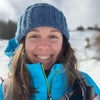Heading out the door? Read this article on the new Outside+ app available now on iOS devices for members! Download the app.
The climb up Aconcagua, the tallest mountain in South America at 22,841 feet, starts with an odd obstacle: small, round rocks that roll at the slightest touch. Crossing them is like roller skating on marbles. To do it without seeing what’s beneath your boots is even harder. Yet that’s just what Lonnie Bedwell and Steve Baskis did in January 2020, with the help of guides Danika Gilbert, Kennan Harvey, and Dave Penney. “You have to check every foothold. Your legs are constantly engaged, you get no rest,” Bedwell recalls. From there, the normal route up Aconcagua ascends to narrow ledges, scree fields, and what remains of the massif’s glacier. The duo navigated it all with the assist of verbal cues from their teammates.
Both Bedwell, a former Navy sailor, and fellow climber and past infantryman Steve Baskis are blind veterans—Bedwell lost his vision from a hunting accident in 1997, and Baskis from an IED explosion while serving in Iraq in 2008. Bedwell made the first blind descent of the Colorado River through the Grand Canyon in 2013, and Baskis has already climbed four of the Seven Summits (the highest peaks on every continent) with plans for the rest. On Aconcagua, they were “the fastest team on the mountain, hands down,” says Harvey. While climbing, Baskis and Bedwell relied on their endurance, pushing themselves to the physical and mental limit. “It’s very tedious, being careful for a long period of time in irregular terrain—it can be mentally exhausting more than physically,” Baskis says. “You knuckle down and just try to achieve something that seems impossible.”
Both climbers find a purpose in mountaineering that stretches beyond the summit. “I want to prove what’s possible,” Bedwell says. “Not just for blind people but for everybody. I want to show the world that life isn’t over just because you can’t see.”
The guides recalled the journey as a set of vistas—sunsets at high camp, the moraines left by retreating glaciers—while Bedwell and Baskis frame their climb very differently. “I think that’s the cool thing about being blind, you gotta reach out and touch it,” says Baskis. “Climbing—it’s very tactile, whether it’s hiking or mountaineering or rock climbing. You get to feel nature under your feet.”
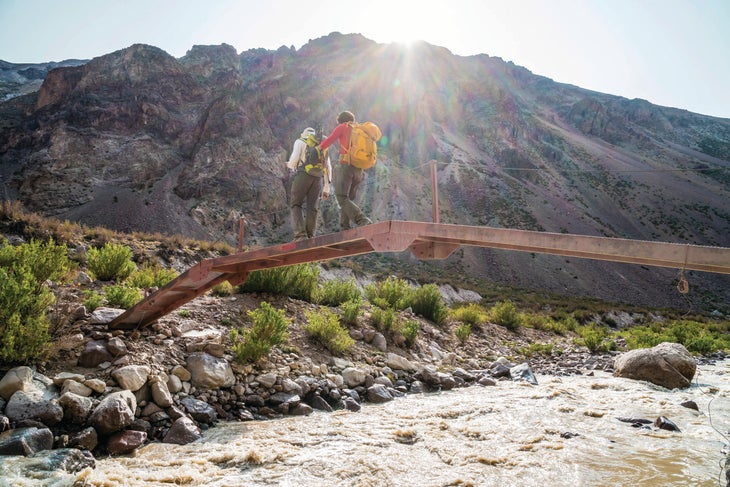
Penney and Baskis cross the Vacas River on the way to basecamp
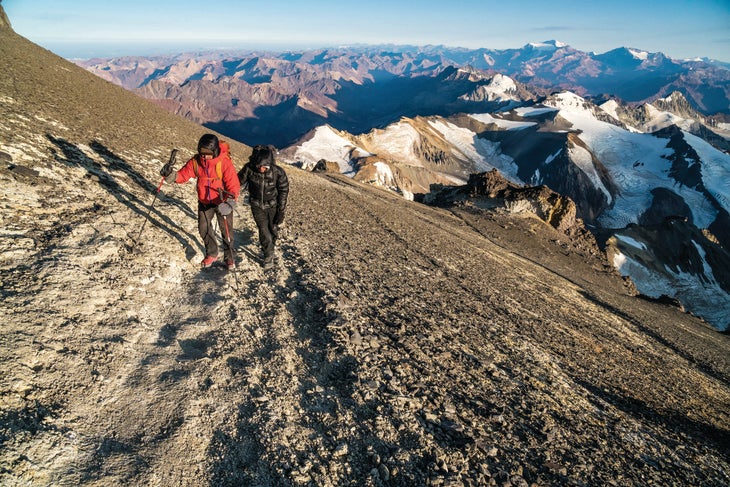
Bedwell (front) and Penney push for the summit.
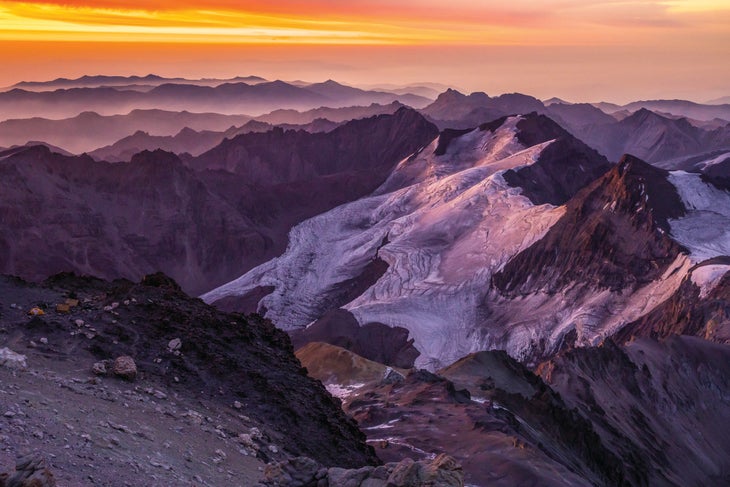
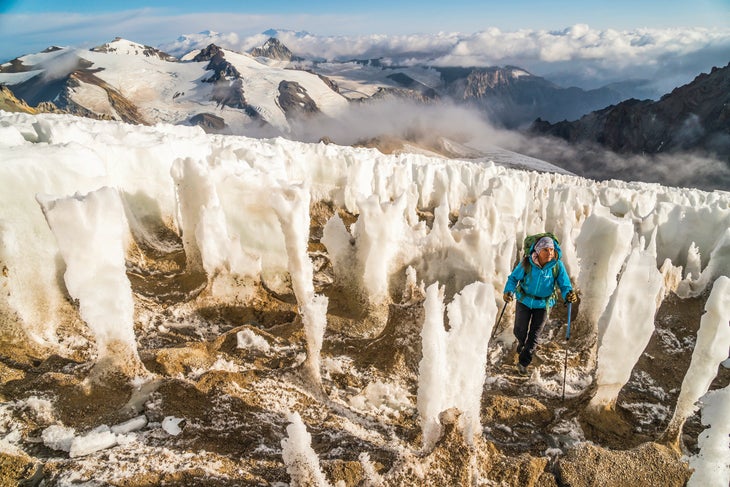
Gilbert hikes through penitentes (thin blades of hardened snow) below Camp 3
Photography by Kennan Harvey
